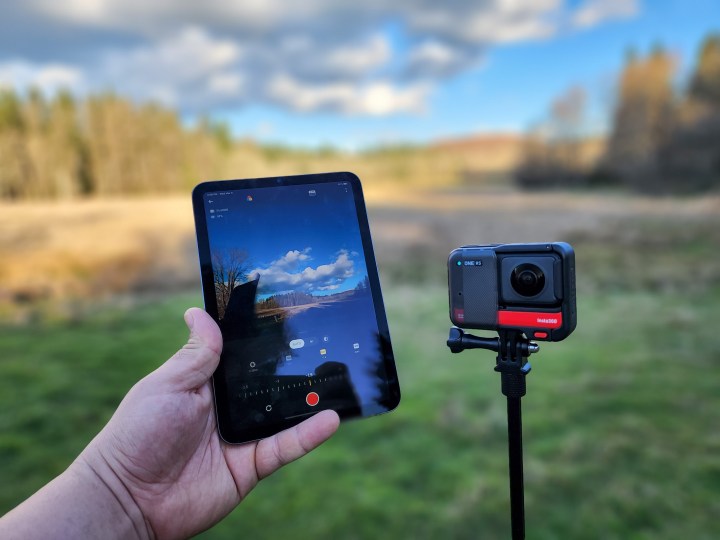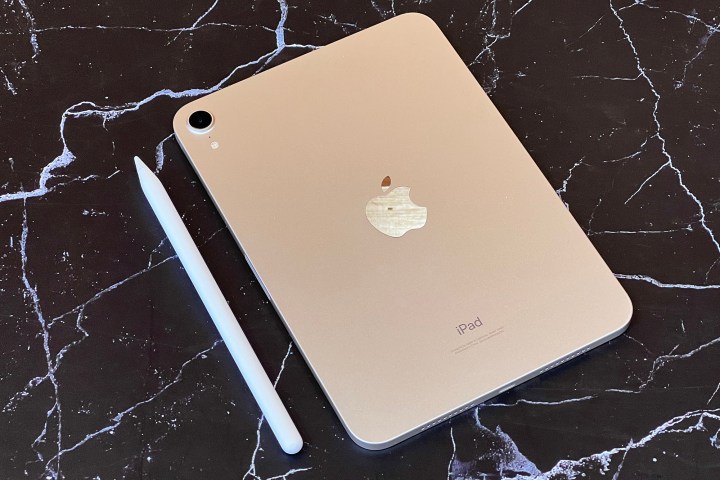Apple surprised everyone yesterday by introducing an updated iPad mini. What was less surprising was the package itself. It has the same look and feel, but it’s doused in a few new colors and riding atop the might of A17 Pro silicon to enable Apple Intelligence.
“Built for Apple Intelligence,” says the company in its press headline. The tablet’s 8.3-inch screen has been blessed with support for Apple Pencil Pro, which bestows tricks like pressure recognition for strokes, hover, barrel roll, haptic feedback, and Find My support.
The asking price is still $500 for the Wi-Fi variant, while the cellular version will have you spending $649. Thankfully, the base storage capacity is now 128GB, not 64GB. That’s the end of the story for upgrades, and it leaves me awfully confused about what the point of the new iPad mini is — and who should buy it.
The new iPad mini doesn’t fix anything

In hindsight, that also means the iPad mini doesn’t improve on any meaningful aspects that also held back its predecessor. Ever since Apple introduced the sixth-generation iPad mini with its flashy redesign, I’ve often asked myself a question: “Just how fast do I want my small tablet to be, and how deep should I dig into my wallet for it?” Yes, it’s small. A darn near perfect size for reading e-books. Maybe a bit of video watching and some casual games. The build quality is astonishingly great, too.
In Apple’s ad and some really well-shot independent videos, it looks like a fantastic device to put on the desk or shelf. Maybe as a secondary screen for controlling music playback or smart home devices, too. But spending half a grand for that kind of utility has never made sense to me.
Some would say it’s a perfect little device for sketching and note-taking. Once again, that’s too much to pay for a digital notebook, especially when you pay dearly for that white pen. Or, in this case, $129 for the Apple Pencil Pro.
Or you could get one of Boox’s fantastic e-ink (color or monochrome) tablets, that are nearly half as slim, feel fantastic to write upon, and cost much less. Or get the Remarkable Pro, if you’re that serious about note-taking, and nab a free pen while you’re at it.
The downsides of a small slate

As far as creative work goes, I am not sure how many people go for the iPad mini as a serious work machine. Maybe, as an on-the-go, stop-gap slate. Or maybe an enthusiast hoping to get a feel for tools like Procreate before jumping to something like the iPad Air or Pro.
Earlier this year, while testing a Wacom tablet with a 13-inch OLED screen, I asked architects and fashion designers about their take on the thin slate. They loved the sleek machine but said it’s still not the best size for serious sketching or illustration work.
The iPad mini offers a considerably smaller 8.3-inch screen and a far less appealing LCD panel. The panel is identical to its predecessor, which itself was not really a benchmark in the category. To its credit, the screen was sharp and contrasty but not particularly bright.
“I constantly have to run the iPad mini at max or near-max brightness just to work with it on a daily basis, and I’m sure that adversely affects battery life,” said Digital Trends’ review of the 2021 iPad mini. Apple hasn’t made any changes in that department for the seventh-gen iteration. I won’t unearth the jelly-scroll demons from 2021.

Battery life is purely subjective as far as the mini tablet goes. For me, I regularly went past a whole day on the 2021 model. But my use-case scenario was “conditional” at best. A bit of reading, a couple of short OSINT lessons, and checking emails.
I won’t call it demanding by any stretch of the imagination. I tried working on the sixth-gen iPad mini. And by work, I mean my daily routine that I would otherwise ask my $500 OnePlus Pad 2 to handle. It wasn’t great.
I started by hunting for a keyboard accessory because Apple doesn’t make one for the iPad mini. I got the well-received HOU keyboard folio for a sweet $50, but I sorely missed the convenience of a trackpad. Despite my best attempts, the keyboard layout proved too cramped to race past a draft.
I’ve seen some folks editing videos on the iPad mini. I tried it, but I couldn’t handle the constant squinting at the screen. I just can’t imagine handling a timeline with even half a dozen audiovisual effects interspersed across the length of an 8-inch panel.

Casual tools like Capcut? Maybe. Something like LumaFusion? Hell no! It’s just funny that the processor can handle short videos with ease. With the 2024 iPad mini, I don’t see the story changing.
Once again, you get a processor that would smoke the benchmark charts but is dramatically held back by the screen size. And while you’re pushing it, the battery will trickle down a little too fast for your liking.
I can confidently predict that fate after spending a few months with DaVinci Resolve and LumaFusion on the 13-inch iPad Pro with M4 silicon. And yeah, it definitely hurt handing over the 2021 iPad mini to my sister, less because I was feeling generous and more out of sheer frustration.
Reaching for the future, with past demons

I don’t see how the 2024 iPad mini will change any of that. The silicon is fast. I reckon it goes toe-to-toe with the best that Android has to offer. I am just unsure what I will get out of all that firepower. Future-proofing? Certainly.
Then comes the question of Apple Intelligence, which many see as the Trojan Horse that would redefine the iOS and iPadOS experience. So far, that hasn’t happened in whatever little capacity Apple Intelligence has arrived.
In 2025, the AI toolkit is predicted to take its final form, with all the fancy bells and whistles such as ChatGPT integration. So, you’re essentially buying into the promise of features well into the future, but getting the payment slip before Christmas comes this year.
Functionally, however, I don’t see how Apple Intelligence will make a practical impact. Priority and summarized notifications, voice transcription in Notes, and smart reply? Well, how impactful they are depends on how many “work” apps you’ve got running on the tiny tablet.
Image Playground and text-to-image Genmojis? Not exactly intelligent features, I’d say. Also, I don’t know many people who are psyched about a more conversational Siri and enthusiastically look forward to using it more frequently because it’s now a bit more chatty.
It’s a divisive concept

Interestingly, despite all its pitfalls, there’s an audience ready to lap up the iPad mini. It has a legion of ardent fans. Most of them adore its small form factor, and this tiny tablet just works for them for whatever utility it delivers.
I am just not sure the 2024 iPad mini offers anything meaningful to that audience — or to those still sticking to the older version with bezels as thick as a cocktail sausage. Why run to the nearest Apple Store for the new one when the old horse is still kicking and galloping?
Given the choice, I’d rather splurge on a used or refurbished sixth-gen iPad mini and save some cash to spend on an Apple Pencil to accompany it. The 2024 version doesn’t solve any problems associated with its predecessor.
Unless you’ve been holding on for a refresh, the 2024 update won’t blow you away. It’s just the same car with a faster engine, with all the flaws of its predecessor still riding with it. If you’re OK in that driver’s seat, cheers to you. For the rest, side with gritty patience or look elsewhere.




